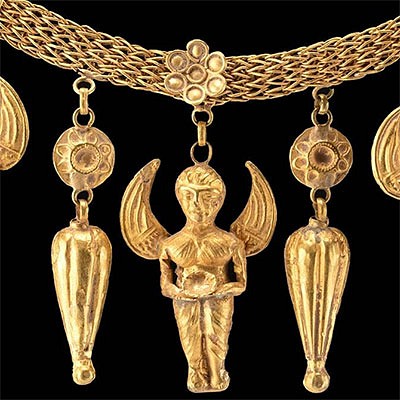Greek Phrygian Copper Bull Rhyton
Lot 12
About Seller
Artemis Gallery
686 S Taylor Ave, Ste 106
Louisville, CO 80027
United States
Selling antiquities, ancient and ethnographic art online since 1993, Artemis Gallery specializes in Classical Antiquities (Egyptian, Greek, Roman, Near Eastern), Asian, Pre-Columbian, African / Tribal / Oceanographic art. Our extensive inventory includes pottery, stone, metal, wood, glass and textil...Read more
Categories
Estimate:
$5,000 - $7,500
Absentee vs Live bid
Two ways to bid:
- Leave a max absentee bid and the platform will bid on your behalf up to your maximum bid during the live auction.
- Bid live during the auction and your bids will be submitted real-time to the auctioneer.
Bid Increments
| Price | Bid Increment |
|---|---|
| $0 | $25 |
| $300 | $50 |
| $1,000 | $100 |
| $2,000 | $250 |
| $5,000 | $500 |
| $10,000 | $1,000 |
| $20,000 | $2,500 |
| $50,000 | $5,000 |
| $100,000 | $10,000 |
| $200,000 | $20,000 |
About Auction
By Artemis Gallery
Dec 3, 2020
Set Reminder
2020-12-03 10:00:00
2020-12-03 10:00:00
America/New_York
Bidsquare
Bidsquare : Fine Antiquities, Ethnographic & Fine Art
https://www.bidsquare.com/auctions/artemis-gallery/fine-antiquities-ethnographic-fine-art-6119
Features classical antiquities, ancient and ethnographic art from cultures encompassing the globe. Egyptian, Greek, Roman, Etruscan, Near Eastern, Asian, Pre-Columbian, Native American, African / Tribal, Oceanic, Spanish Colonial, Russian, Fine Art, so much more! All legally acquired, legal to sell. Artemis Gallery info@artemisgallery.com
Features classical antiquities, ancient and ethnographic art from cultures encompassing the globe. Egyptian, Greek, Roman, Etruscan, Near Eastern, Asian, Pre-Columbian, Native American, African / Tribal, Oceanic, Spanish Colonial, Russian, Fine Art, so much more! All legally acquired, legal to sell. Artemis Gallery info@artemisgallery.com
- Lot Description
East Greek, Phrygian, ca. 7th to 6th century BCE. Skillfully cast via the lost wax (cire perdue) method, a copper rhyton in the form of a bull head, replete with expressive features delineated in low to high relief, including large round eyes with creases above as if opening them wide, a prominent wrinkled snout with delineated nostrils and mouth, and pointy horns with ears below. A smooth handle joins the rim to the lower end of the back of the bull's neck. A very rare example. Size: 7.5" L x 4.375" W (19 cm x 11.1 cm); 9.375" H (23.8 cm) on included custom stand.
Rhytons like this example demonstrate the ancients' refined taste for special tableware, and this piece was probably used both as a drinking cup and as a pouring vessel to decant wine into drinking bowls during festive banquets. Zoomorphic forms like this one were popular throughout the Classical world, and bulls symbolized power, signifying virility and masculinity, qualities prized above all others in ancient Greece. What's more, bull figures were often given as offerings at the Temple of Zeus of Olympia.
Provenance: Estate of Dr. W.M. Bogdanowicz, Naples, Florida, USA, purchased in 1989 at Grays Antiques, Mayfair, London, UK
All items legal to buy/sell under U.S. Statute covering cultural patrimony Code 2600, CHAPTER 14, and are guaranteed to be as described or your money back.
A Certificate of Authenticity will accompany all winning bids.
We ship worldwide and handle all shipping in-house for your convenience.
#160724Loss below the handle and areas of loss to neck with radiating cracks as shown. Copper has developed a rich age patina.Condition
- Shipping Info
-
All shipping is handled in-house for your convenience. Your invoice from Artemis Gallery will include shipping calculation instructions. If in doubt, please inquire BEFORE bidding for estimated shipping costs for individual items.
-
- Buyer's Premium



 EUR
EUR CAD
CAD AUD
AUD GBP
GBP MXN
MXN HKD
HKD CNY
CNY MYR
MYR SEK
SEK SGD
SGD CHF
CHF THB
THB














